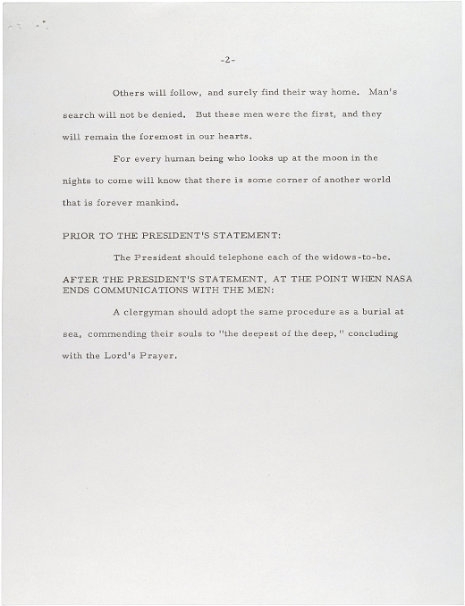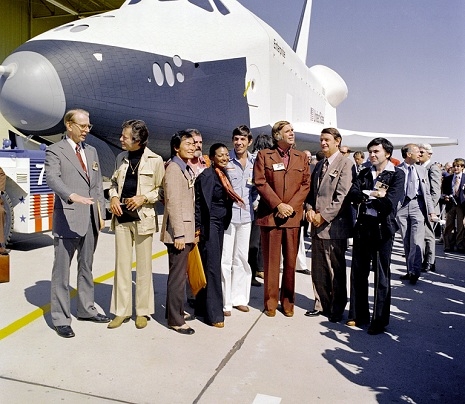
Prior to the July 20, 1969 Apollo 11 lunar landing, one of President Richard Nixon’s speechwriters, William Safire, who later became a long-standing political columnist, wrote a speech for Nixon to give in case the mission failed and the astronauts were stranded on the Moon. “In Event of Moon Disaster” was originally sent as a memo, dated July 18, 1969, to Nixon’s chief of staff H.R. Haldeman and is yet another argument against the moon landing being a hoax:
IN EVENT OF MOON DISASTER:
Fate has ordained that the men who went to the moon to explore in peace will stay on the moon to rest in peace.
These brave men, Neil Armstrong and Edwin Aldrin, know that there is no hope for their recovery. But they also know that there is hope for mankind in their sacrifice.
These two men are laying down their lives in mankind’s most noble goal: the search for truth and understanding.
They will be mourned by their families and friends; they will be mourned by the nation; they will be mourned by the people of the world; they will be mourned by a Mother Earth that dared send two of her sons into the unknown.
In their exploration, they stirred the people of the world to feel as one; in their sacrifice, they bind more tightly the brotherhood of man.
In ancient days, men looked at the stars and saw their heroes in the constellations. In modern times, we do much the same, but our heroes are epic men of flesh and blood.
Others will follow, and surely find their way home. Man’s search will not be denied. But these men were the first, and they will remain the foremost in our hearts.
For every human being who looks up at the moon in the nights to come will know that there is some corner of another world that is forever mankind.
PRIOR TO THE PRESIDENT’S STATEMENT:The President should telephone each of the widows-to-be.
AFTER THE PRESIDENT’S STATEMENT, AT THE POINT WHEN NASA ENDS COMMUNICATIONS WITH THE MEN:A clergyman should adopt the same procedure as a burial at sea, commending their souls to “the deepest of the deep,” concluding with the Lord’s Prayer.


NASA’s 45th anniversary of moon landing original resource reel:















